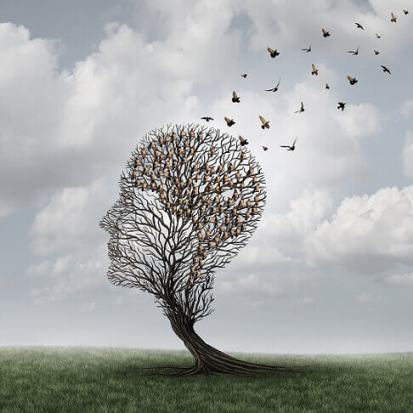Gestalt Therapy: Keys to treat depression
Treating depression with Gestalt therapy is a strategy as useful as it is interesting. It allows us, for example, to readjust our reality in a more creative way, the resolution of the emotional blocks to interact with ourselves and everything that surrounds us in a more valid and safer way.
We are facing a type of approach that, it must be said, is still finding its place in the world of the clinic. However, its effectiveness is evident, and it is worth digging a little deeper into this current of psychology. For example, the central point that defines it is the idea that people are always in continual transformation.
Thus, and in this constant mutation, conflicts, imbalances and tensions are common. In this continuous interaction between our body and what surrounds us there are often pieces that do not fit and that break that balance between oneself and the “everything” that surrounds us.
Depression is undoubtedly one of the most common problems (or imbalances). Moreover, according to Gestalt psychotherapy, depressive disorders occur when there is a blockage, when our reality ceases to be in harmony and we lose even the ability to connect with ourselves and our needs.
It is clear, however, that each psychological approach and each therapeutic school has its particular strategy to address this disease; however, we can say that Gestalt therapy is very effective in working with these blockages and in turn favoring our self-realization. Let’s see 4 Gestalt therapy keys to understand its line of work a little better.
Table of Contents
1. Expressive Gestalt techniques to treat depression
With the expressive techniques of Gestalt Therapy, we are looking for something very specific: to carry out our internal tensions, to channel this energy that generates the knot of our conflicts and define the root of our problems little by little and in a loud voice.
We cannot forget that according to this approach depression is for the human being an adverse experience that corners us and isolates us. We are so focused on ourselves that all we do is accumulate negative energy. Feeding exclusively on that torrent of sensations and thoughts so adverse fragments us even more…
It is therefore necessary to express what is inside us, to make contact with our emotions and let them go, to allow them to emerge into the light.
2. Suppressive techniques
To treat depression, according to Gestalt therapy it is very useful to get the patient to apply a “suppressive” approach. Now: what do we understand by suppressive technique? As the word itself indicates, we will eliminate something, something that breaks the harmony with everything around us and instead blocks that healthy union with our inner being.
- We must therefore “suppress”, control and manage all those thoughts and dynamics that take us away from the present moment, here and now.
- Instead of plunging us into an infertile torrent of worries that do not take us anywhere, we must allow ourselves to “experience” the moment, feel each second in an open and receptive way.
- We must also eliminate from our internal discourse of the “should”, the phrase “may what”, “maybe”… this also takes us away from the here and now.
3. Integrative techniques
For Gestalt, the depressive experience supposes a personal defragmentation. Our reality is broken down and we are disconnected in turn from our internal needs and of this context that surrounds us where, suddenly, we do not feel identified. Gestalt therapy seeks to promote this integration between our body and the environment that balance now lost. Integrative techniques have this purpose and work through two strategies:
- The intrapersonal encounter. Where to favor a more skillful and effective dialogue. An exchange where you become aware of certain elements and circumstances. For example: “I think I’m not worth anything” ⇔ What concrete facts lead me to this conclusion?
- Assimilation of projections. For example “I think all my coworkers hate me” ⇔ projection ⇔ Put yourself in the place of all your co-workers and imagine that you are all of them. What concrete and logical reasons do they have to hate you?
Likewise, it can be said that this process between the therapist and the patient achieves excellent results whenever “awareness” occurs. That is to say, that step through which the person “realizes”, becomes aware of what he thinks, feels and happens inside him.
4. Creative Environment
The therapeutic work of the Gestalt not only seeks to free us from our blockages or solve pending issues that sometimes also break the balance with the whole that forms us. What the therapist will try to achieve from us is that with therapy we end up being the freest and most creative people when it comes to solving our daily problems.
Therefore, it is not enough to heal, to overcome a depression. We must learn from this process by setting a creative, drawing something new from it, an enhancer drive where acquiring new resources and capabilities to create a richer, more flattering, and of course, happy.
Creative adjustment is a transforming impulse. An impulse that allows us to move forward, feeling renewed, stronger and also more capable. In this way, and to conclude, we cannot forget that on that path to recover our internal homeostasis and that perfect harmony with what surrounds us is also necessary to integrate new skills to flow in the journey of life with greater solvency.

